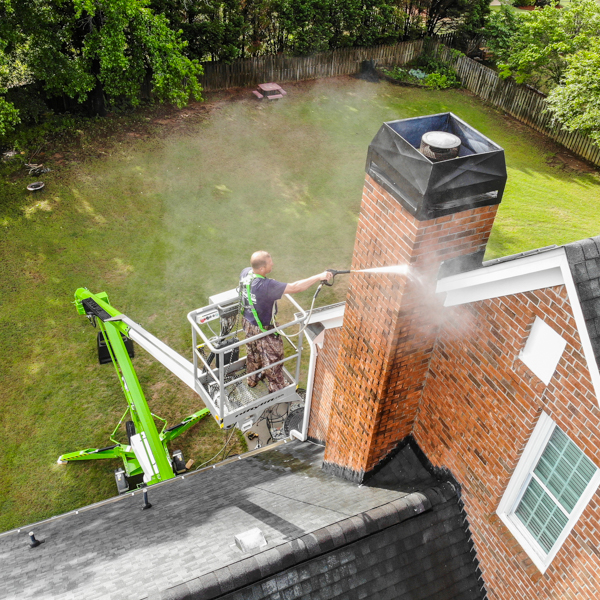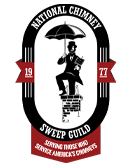How To Identify Stains On Your Chimney
Chimneys are exposed to many different weather and environmental conditions, including thunderstorms, sub-freezing temperatures, high-velocity winds, and UV radiation. The damage may eventually cause staining in a rainbow of colors or patterns. We’ve created a handy color chart so you can learn how to identify stains on your chimney.
 White
White
White stains or efflorescence typically appear in the spring or summer. Efflorescence seems to wash away when it rains but reappears when the masonry dries in the warm sunshine. Efflorescence occurs when moisture penetrates deep inside the clay brick, drawing the salts to the surface as a white stain on the affected sections. Since this is a sign that the porous brick and mortar are absorbing moisture, it is essential to have a Certified Chimney Professional® conduct an inspection to prevent further damage to the structure.
Red
You may notice streaks of reddish or red-orange stains flowing down the sides of your chimney, often near or around the cap, crown, chase cover, or other metal components. This is usually rust indicating damage to the metal component. Replacing the rusted part usually resolves the problem. However, you must do it quickly as rust is corrosive and will eat away the masonry on contact, resulting in more extensive repairs.
Blue Green
Blue or green-tinted stains usually indicate some organic growth, such as algae or mold taking hold of the chimney. Algae, mold, and mildew are naturally present in our environment and often hitch a ride in the wind or on the backs of a thunderstorm. Mold, mildew, and algae thrive in moist, humid climates like here in northern Georgia and South Carolina. Their microscopic spores can eventually enter your house through tiny cracks in the masonry or foundation, harming your family, including pets.
Brown/Black
Dark black or brown oily stains are usually the signs of flammable creosote. Naturally produced during combustion, creosote sticks to the sides and walls in the flue as smoke and pollutants vent out of your home through the top of the stack. Without regular chimney sweeping, the creosote will continue to accumulate, increasing fire risk. It is the number one cause of house fires, according to the National Fire Protection Association (NFPA).
 Chimney Inspection and Repair
Chimney Inspection and Repair
Stains on and around your chimney are usually a sign of potential trouble. Finding out the cause and fixing the problem quickly will minimize repairs and prolong the life of your chimney.
Advanced Chimney Sweep provides certified chimney inspections and repairs from the South Carolina Midlands region to the Central Augusta River Area (CSRA), including Georgetown, GA, Pooler, GA, Bluffton, SC, and Columbia, SC.
Call (803) 508-3990 or (706) 833-4630 today to schedule an appointment, or contact us online.





